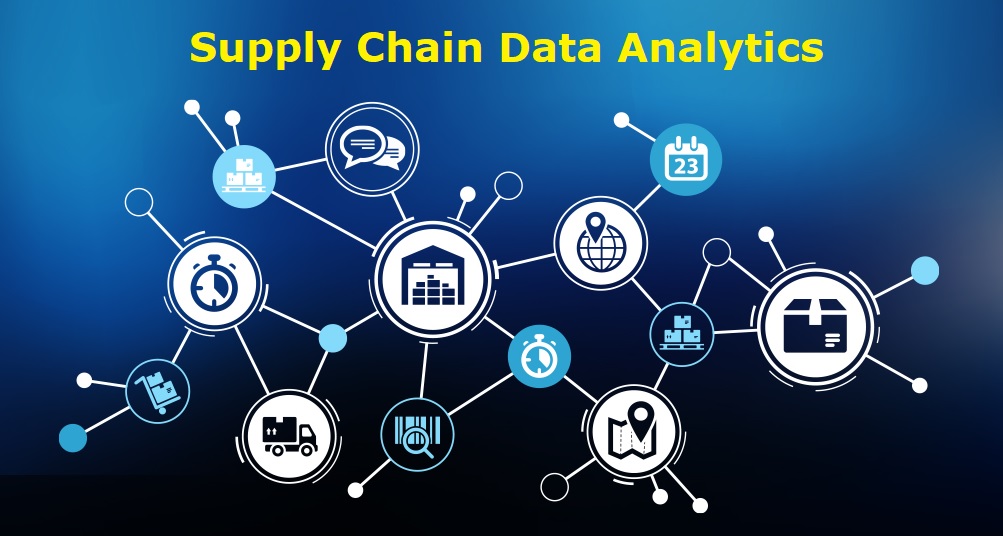Prepare to embark on an exhilarating journey into the realm of mobile gaming, a phenomenon that has revolutionized how we engage
Predictive machine learning for supply chain data analytics is a hot topic, but there are few examples of its use in the actual world. Using historical OEM data, this research attempts to forecast first-tier supply chain data analytics failures.
Expert technique consists of the following components: Investigation is the initial phase, during which potential predictors of disruption are identified and created. The following stage is to develop an effective performance metric for the case study method.
Then, an experimental design is utilized to compare the performance of several algorithms in the selected feature space. By adding factors such as agility in the engineering data, it is possible to create a final system that can forecast late orders with an 80 percent degree of accuracy.
Additionally, machine intelligence helps forecast supply chain interruptions. This post will let you know the importance of analyzing supply chain data using data analytics. Lastly, we emphasize the importance of topic knowledge.
What Is Supply Chain Data Analytics
Analytical supply chain management is the use of advanced data expertise throughout the whole supply chain visibility, from data collecting and processing through inventory management and delivery.
On top of this methodological foundation, it is possible to automate and optimize logistical procedures. It might be utilized in a variety of ways to enhance the supply networks of businesses.
- Individuals: productivity of human resources measurement
- Resources: Flow of systems and supply chain visibility solutions evaluation
- Activities: Physical and digital processes in supply chain optimization
- Technologies: the Synergy between hardware and top supply chain software to support all of the points above.
How Is Data Analytics Used in the Supply Chain?
Companies may employ sophisticated analytics to gain a deeper understanding of their supply chain. Advanced data can provide precise information that can assist you in enhancing your business and making more informed decisions. Advanced data enhances the value of assets, the inventory balance, and other crucial indications.
Advanced analytics reveal the supply chain's strengths, flaws, and difficult places. According to a survey by IW/SAS, sophisticated data helps firms enhance their supply chain intelligence.
The study concluded that improved analytics helped organizations anticipate and avert difficulties. Due to this, conventional supply chains cannot anticipate future issues or possibilities. It is feasible to be more productive and earn more money with the use of intelligent analytics.
Utilizing modern data makes it easier to determine market trends. Examine the past, present, and future trends and requirements in your profession.
Understanding supply and demand patterns will give you an advantage in the marketplace. When demand is strong, you should create or store more, and when demand is low, you should use fewer resources.
This will allow you to better manage your operating expenses. The information is accurate and reliable. It removes subjectivity and prejudice from decision-making and reveals your company's true perspective.
Without data, supply chains would not exist. Reaction that is sluggish and inefficient You may improve yours by acquiring fresh knowledge. You can outperform your rivals if you boost inventory and enhance critical KPIs prior to peak periods.
To establish a business, you will need to be well-versed in several topics. Utilizing cutting-edge analytics will increase your company's profits.
How Is Predictive Analytics Transforming Logistics and Supply Chains?
Due to the fact that time and resources may make or break a company's bottom line, logistics requires predictive analytics to assure profitability.
Businesses in the supply chain must take into account a number of issues, including shipping trends, consumer purchase habits, delivery schedules, and inaccurate inventory forecasts.
Improving the SCV
The many phases of a shipment's existence are now better understood by suppliers and shippers.
3PLs utilize predictive analytics to monitor devices, boost visibility of cargo status and location, reduce shipping costs when shipments are late or behind schedule, and unlock new income streams by meeting visibility requirements to prevent late shipments.
Expect the Unanticipated
The news, the weather, shortages, and manufacturing incentives may all influence the supply chain and logistics.
Using algorithms that can predict unanticipated occurrences may make them more capable of adjusting shipments and inventory to accommodate time-sensitive adjustments to routes or stock.
Predictive Maintenance
This AI solution is priced competitively. By examining component failures for trends and anomalies, suppliers and logistics companies may predict when parts will break in the future. This increases the efficiency of the supply chain and the uptime of the equipment.
Forecasting Ability
There is less waste and more on-time delivery now that anybody may manage inventory and shipments based on customer preferences and purchasing methods.
Using supply and demand forecasts, businesses may make proactive decisions regarding how to run their operations. facilitates low-cost rebalancing of logistical assets.
Transportation Management Systems Tweaking
Logistics businesses use TMS to track shipments and anticipate their arrival times.
TMS might be assisted by predictive analytics in spotting potential problems and supporting logistics businesses in conducting their operations more efficiently. To understand more about seasonal buying habits and estimates, predictive analytics may be valuable for suppliers.
Last-Mile Delivery
In the last mile of delivery, predictive analytics may prove valuable. Transportation of goods accounts for 30% of total carbon emissions. Using robotics, anticipatory shipping, and predictive analytics route optimization can make last-mile delivery more environmentally friendly.
Benefits of Introducing Predictive Analytics Solutions in Supply Chain Management
Identifying potential dangers and their possible origins is the initial stage in risk management. Consider the likelihood of their occurrence. Some hazards are understood because they have occurred in the past and lessons have been gained.
Unpredictable events, such as political upheaval, natural disasters, and terrorist acts, are an integral part of life on Earth. Even when labor hazards, supplier financial stability, and infrastructural issues are at their most severe, on-time delivery remains at risk.
Customers who are satisfied with their purchases are more likely to shop again. Customers worry less about missing components and other problems. Because people have confidence in you, they expect you to respond to their needs when they arise.
The customer will not lodge a complaint if your carrier is responsible for the delay. You or a member of your team will be asked to explain why your organization did not achieve its goals.
Every manufacturing company must do a risk analysis. This strategy includes predicting the result of each step along the journey. Logistics are crucial elements of every supply chain. If the necessary components are not accessible, no product can be manufactured or distributed.
With the use of supply chain predictive analytics, executives can be guaranteed that logistical estimates are accurate and up-to-date, allowing them to make sound decisions.
Unlike manual reporting, predictive supply chain analytics utilizes data from several sources. Using big data and "small" data, predictions are created up to 10 days prior to the bidding date.
To build a logistics strategy that accounts for all conceivable courses and routes, forms of transportation, and delivery risks, your organization must utilize massive amounts of data.
Any logistics business might utilize the same information. Insufficient data renders it meaningless. It is crucial to assess both large and small data sets when examining logistics strategies, such as OTIF obligations, income, profit margin, customer satisfaction, and market share.
You May Also Like
The digital age has seen the meteoric rise of online casinos, transforming the way enthusiasts around the globe play their favorite games
Starting as PakCyber, a web app development company in 1998, and later evolving into Quaid Technologies in 2013, the company






